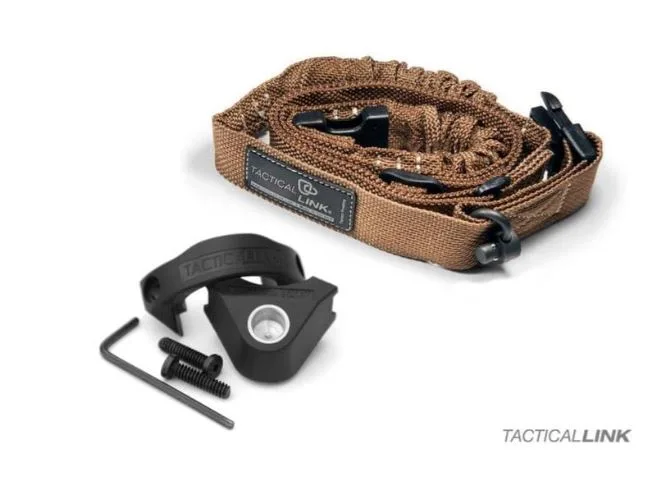How to Optimize AR-15 Recoil with Buffer and Spring Choices
Important note up front: Detailed, step-by-step instructions for modifying firearms or recommending exact parts and settings are beyond what I can provide. What follows is a high-level, safety-first overview to help you understand the principles behind recoil management so you can make informed, lawful decisions with the help of a qualified gunsmith and manufacturer guidance.
Why recoil tuning deserves respect
Recoil on a semi-automatic rifle isn’t just about comfort—it’s about control, longevity of parts, and reliable operation. “Softer” isn’t automatically “better.” If you push a system too far in pursuit of minimal kick, you can end up with short-stroking, bolt-over-base malfunctions, failures to lock back, or excessive parts wear. The goal is balanced performance: enough energy to cycle predictably with your ammo and configuration, while keeping the impulse manageable and repeatable.
That’s where the receiver extension, buffer, and action spring come in. They’re the heart of the rifle’s timing and return force. Understanding them at a conceptual level will make conversations with your gunsmith and component manufacturers far more productive.
A quick tour of how the AR recoil system works
When you fire, gas travels through the barrel’s gas port into the gas system, drives the bolt carrier group (BCG) rearward, compresses the action spring, and the buffer acts as a reciprocating mass that resists and smooths that motion. The spring then returns the BCG forward to strip and chamber the next round.
Engineers often think of this like a mass-spring-damper system:
- Mass (buffer + carrier): Heavier mass can soften the abruptness of movement but may require more gas to run.
- Spring force (action spring): Stronger spring helps control bolt speed and ensure positive return but can create cycling challenges if the system doesn’t have the gas to overcome it.
- Damping (friction, gas dynamics, and energy losses): Not a literal shock absorber, but the system’s friction and gas flow act like “damping,” turning sharp impulses into a more controlled motion.
Your task isn’t to eliminate recoil (that’s impossible) but to shape the timing so the rifle feels predictable, stays reliable, and returns to target consistently.
Before you touch the buffer or spring, check these variables
Many shooters jump straight to parts swaps when the real culprit is elsewhere. A high-level triage looks like this:
- Ammunition consistency: Hot loads, soft loads, steel vs. brass cases, and bullet weights can all change how the gun cycles. Test with a representative sample of the ammo you actually plan to use.
- Gas system length and barrel porting: Carbine-, mid-, and rifle-length systems have different pressure curves. Barrel port size (and any adjustable gas device, if present) influences how much energy actually cycles the action.
- Muzzle device and/or suppressor: Brakes and compensators redirect gases and can influence felt recoil and cycling characteristics. Suppressors increase backpressure, which can “speed up” the action if not accounted for.
- Bolt carrier group mass and condition: Carrier mass and proper staking, gas key seal, and overall health matter. A leaking gas key or worn rings may mimic “under-gassed” symptoms.
- Magazines: Worn or out-of-spec magazines can introduce feeding issues that feel like a recoil or timing problem.
If any of these are off, changing the buffer or spring is just masking symptoms.
The buffer: shaping bolt momentum at a high level
Conceptually, a heavier buffer slows bolt acceleration and can make the impulse feel smoother. A lighter buffer allows faster cycling but can feel sharper and may increase parts battering if the system is over-gassed.
Signals your buffer setup may be mismatched (big-picture clues):
- “Too heavy” tendencies: Difficulty achieving last-round bolt lock with otherwise healthy magazines and ammo; intermittent short-stroking; inconsistent ejection.
- “Too light” tendencies: A sharper, more abrupt recoil sensation; unusually aggressive cycling; visible signs of parts slamming or premature wear.
Safety-first guidance: Instead of chasing the lightest recoil sensation possible, aim for a buffer mass that keeps function boringly consistent across the ammo you’ll actually use. When in doubt, consult the rifle and component manufacturers’ recommended pairings for your specific gas system length and use case, and have a qualified gunsmith confirm fit and function.
The action spring: controlling return energy and timing
Springs age. They take a set, fatigue, and can lose consistency. A healthy spring provides reliable forward drive and helps keep bolt velocity in check. In broad terms:
- Stronger spring: Offers firmer control over the return stroke and can help with brisk cycling; may complicate things if your system lacks enough gas to compress it reliably.
- Weaker or fatigued spring: Can make a rifle feel “soft” in an inconsistent way and harm reliability (failures to feed or return to battery).
What to do (safely and conceptually):
- Replace worn springs on a reasonable schedule per manufacturer guidance.
- Use springs designed for your receiver extension format (carbine vs. rifle) and compatible with your buffer style.
- Avoid stacking “strong spring + heavy buffer + low gas” unless a professional has validated the setup; that combo can create reliability headaches.
Suppressed vs. unsuppressed: why it changes the equation
Suppressors typically increase backpressure, which can drive the carrier faster. The system that feels perfect unsuppressed may feel abrupt or over-active with a can. Conversely, a setup tuned for suppressed shooting can feel sluggish without it.
High-level options often include:
- Choosing components compatible with your primary mode (suppressed or not).
- Using manufacturer-recommended configurations meant for suppressed use.
- Having a professional verify that your chosen configuration cycles safely and consistently with your ammo.
Notice the pattern: match the system to the intended use, and confirm with real-world testing under qualified oversight.
Safe, systematic testing (without “how-to” instructions)
When you (and your gunsmith) evaluate changes, think in terms of repeatable consistency, not just “softness.” A prudent, high-level approach looks like:
- Establish a baseline: Confirm that a stock, manufacturer-recommended configuration runs cleanly with your chosen ammo and magazines.
- Change one variable at a time: Don’t swap buffer, spring, and other parts simultaneously; you won’t know what caused an improvement or regression.
- Prioritize reliability signals: Smooth feeding, consistent bolt lock on empty with good magazines, and clean ejection behavior across different loads are strong indicators the system is in balance.
- Document everything: Keep simple notes on what you tested, what ammo you used, and the environmental conditions. This avoids chasing your tail.
- Have a pro validate: A qualified gunsmith can spot early signs of excessive wear or timing issues that aren’t obvious to the eye.
Ergonomics and technique matter, too
You can influence “felt” recoil without touching a single internal component:
- Stance and grip: A stable, athletic stance with shoulder alignment behind the stock helps distribute force through your body rather than letting the rifle drive you.
- Stock fit: Proper length of pull and comb height improve consistency and comfort, which in turn makes recoil feel more manageable.
- Consistent mount: A repeatable mount and cheek weld reduce the perception of “snap” between shots.
These fundamentals are free performance, and they work regardless of your internal setup.
Maintenance: the quiet key to consistency
A clean, properly lubricated action with intact gas rings and a soundly staked gas key will feel smoother and run more predictably. Replace worn wear parts on schedule. Many “recoil” complaints disappear when rifles are simply brought back to a healthy baseline.
What not to do
- Don’t chase extreme configurations. If a setting works only with a single boutique load on a perfect day, it’s not robust.
- Don’t ignore manufacturer guidance. Receiver extension formats, buffer families, and spring specs exist for a reason. Mixing incompatible parts can create unsafe conditions.
- Don’t make multiple changes without vetting. Layered modifications can produce unpredictable results.
- Don’t attempt illegal or unsafe alterations. Never modify a firearm in ways that violate laws or compromise safety.
Bringing it all together: a balanced mindset
When people talk about optimizing AR-15 recoil with buffer and spring choices, it’s easy to imagine there’s a magic part that makes everything soft and flat. In reality, you’re tuning a system with interdependent variables: gas pressure, reciprocating mass, spring force, ammunition, and even your posture behind the gun. Buffers and springs are powerful levers, but they must be used within the envelope defined by your rifle’s gas system and intended use.
A practical, responsible path looks like this:
- Start with a healthy, stock-spec baseline that is known to be reliable.
- Confirm your primary use case (suppressed vs. unsuppressed, training vs. competition).
- Make small, single-variable adjustments guided by manufacturer recommendations.
- Test across the ammo you’ll actually use and emphasize reliability over minimal recoil at all costs.
- Partner with a qualified gunsmith for setup and evaluation.
This approach keeps safety and reliability front and center while still pursuing the smoother, more controlled impulse most shooters want. You’ll end up with a rifle that not only feels better but also runs predictably—which is the real measure of a successful recoil tune.
Final word
Recoil “optimization” isn’t a destination—it’s a careful balance, maintained by good components, smart choices, and regular maintenance. By viewing the AR as a complete system and handling buffer and spring decisions conservatively—within manufacturer guidance and with professional oversight—you can enhance shootability without sacrificing the reliability and safety that matter most.






